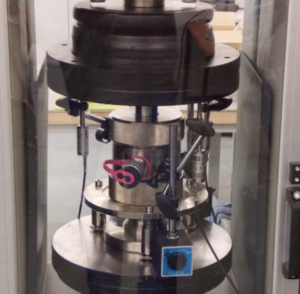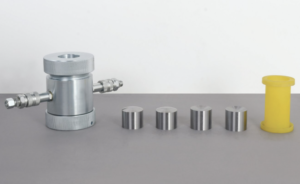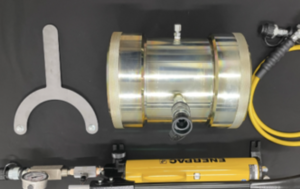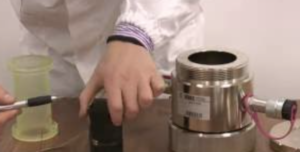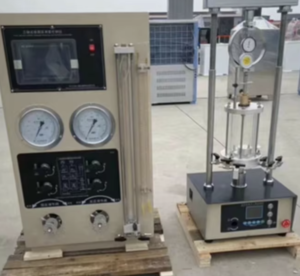Functions of Porous Stones in Soil Triaxial Tests: Drainage, Saturation & Load Transfer
When I first started working with soil triaxial tests1, I never expected porous stones would become my best friends in the lab.
Porous stones2 in triaxial testing help manage drainage, ensure soil saturation3, and evenly distribute loads, safeguarding sample integrity4.
Let me tell you exactly why these little stones are so important.
Why Are Porous Stones Essential in Triaxial Testing?
When I set up my first triaxial test, I thought porous stones were just extras. Turns out, they’re vital.
Porous stones2 allow controlled drainage5, proper saturation, and even load distribution6 in soil tests, ensuring accurate and reliable results.
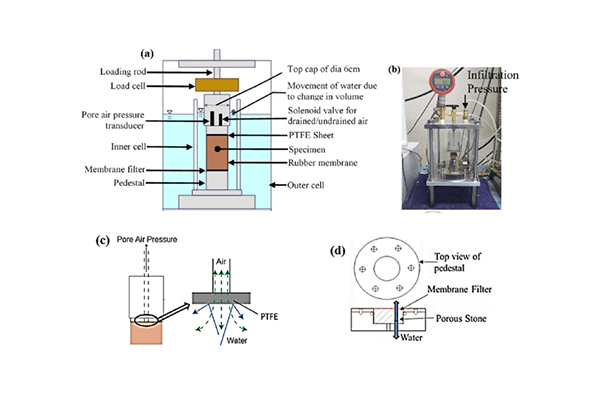
At first, I didn’t pay much attention to the porous stones—I just placed them in the apparatus and hoped for the best. But I quickly realized these tiny components had a huge impact. During triaxial tests1, soil samples experience a variety of conditions—pressure changes, moisture adjustments, and mechanical stress. If drainage isn’t managed well, the results become inaccurate, and all my hard work goes to waste.
Porous stones2 prevent that headache by controlling water flow. They let excess water escape, preventing [pressure buildup](https://www.fhwa.dot.gov/pavement/materials/hmec/pubs/module_b/lab_manual.pdf)7, which would otherwise distort the results. Even better, these stones are essential for making sure the soil is fully saturated, eliminating air pockets8 that can drastically alter readings.
Moreover, porous stones help spread out the applied load evenly across the entire soil sample. Without this uniform distribution, the sample might deform unpredictably. Trust me—I’ve seen samples ruined by uneven load distribution6, turning weeks of careful preparation into frustration in seconds. It’s a small detail that saves so much trouble later.
How Do Porous Stones Facilitate Efficient Drainage During Testing?
Initially, drainage seemed like a minor detail to me—until it messed up one of my tests.
Porous stones2 enable controlled and efficient drainage by allowing water to move freely without soil particle migration, ensuring consistent results.
Managing water flow during a triaxial test is crucial. If water can’t escape efficiently, it creates excess pressure, misleading results, and potentially ruining samples. Porous stones2 act as filters, allowing water to move through while keeping soil particles safely inside the sample.
Controlling Water Movement
Think of porous stones like a coffee filter—they allow the liquid (water) through but keep the grounds (soil particles) back. This precise filtering protects the integrity of your sample and ensures that only water is released.
Here’s a quick overview of the benefits:
| Advantage | Explanation |
|---|---|
| Prevent Pressure Buildup | Efficient drainage keeps water pressure stable. |
| Protect Soil Structure | Soil particles remain intact, ensuring accurate measurement. |
| Speed Up Testing | Quick drainage shortens testing time, increasing productivity. |
In my experience, investing in quality porous stones significantly reduces the time and effort spent troubleshooting drainage issues.
What Role Do Porous Stones Play in Ensuring Full Saturation of Soil Samples?
Early in my testing career, incomplete soil saturation3 nearly drove me crazy.
Porous stones2 enable complete saturation by allowing air to escape easily, ensuring the soil samples accurately reflect real-world conditions.
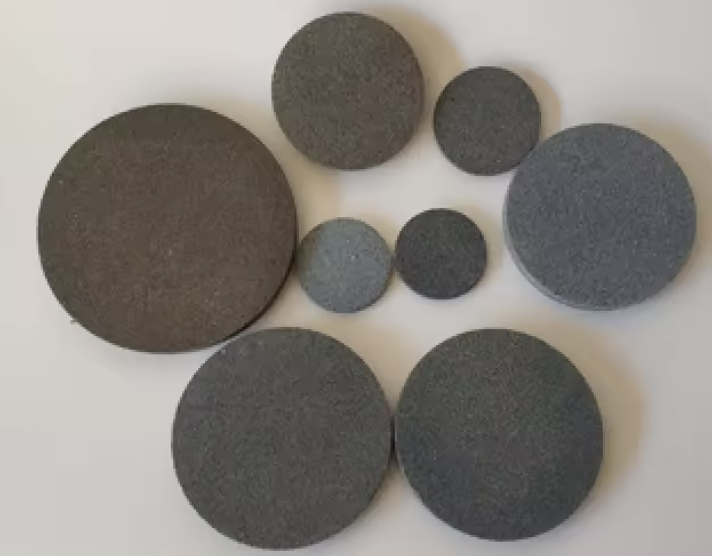
Have you ever tried to fully saturate soil without proper equipment? Let me tell you—it’s nearly impossible. Trapped air bubbles can completely throw off the results, making data unreliable. Porous stones2 saved me from hours of frustration because they provide a controlled way to release air.
The stones create a pathway for air to escape smoothly while water moves into every tiny gap. The result? Fully saturated soil samples, exactly like you’d find in nature. This accuracy is crucial, especially for sensitive applications like infrastructure projects and geotechnical evaluations9.
Why Full Saturation Matters
Incomplete saturation affects the reliability of your test data. It causes:
- Inaccurate readings: Air pockets can artificially increase strength measurements.
- Unrealistic behavior: Soil might behave unpredictably, compromising the test’s validity.
By ensuring thorough saturation through porous stones, I always get consistent, repeatable results I can confidently rely on.
Load Distribution and Sample Integrity: What’s the Structural Role of Porous Stones?
At first, I underestimated the structural role of porous stones—until uneven loads crushed my samples.
Porous stones2 evenly distribute applied loads, preserving sample integrity4, preventing deformation, and ensuring test accuracy.
Imagine stepping barefoot onto gravel versus sand—the gravel distributes pressure, preventing your foot from sinking. Porous stones2 do the same for soil samples in triaxial tests1. They evenly distribute stress, protecting the soil’s structural integrity, especially under high-pressure conditions.
Here’s why this matters:
| Structural Benefit | Why It’s Important |
|---|---|
| Even Load Distribution | Prevents localized stress and deformation. |
| Sample Stability | Maintains consistent shape and density. |
| Accurate Results | Ensures reliability of measured strength values. |
When I started focusing more on the quality of porous stones, I noticed fewer issues with sample distortion, cracks, and other problems that previously plagued my testing process. Trust me—good porous stones save a lot of hassle and heartbreak.
Conclusion
Porous stones2 ensure accurate triaxial results through effective drainage, full saturation, and stable load distribution6—critical for reliable testing outcomes.
-
Learn about triaxial tests and their significance in geotechnical engineering for understanding soil behavior. ↩ ↩ ↩
-
Explore how porous stones enhance soil testing accuracy and reliability, making them essential for effective results. ↩ ↩ ↩ ↩ ↩ ↩ ↩ ↩ ↩ ↩
-
Understand the critical role of soil saturation in ensuring reliable test outcomes and accurate data. ↩ ↩
-
Learn techniques to preserve sample integrity in soil tests, ensuring reliable and valid results. ↩ ↩
-
Discover the importance of controlled drainage in soil tests and how it impacts the accuracy of results. ↩
-
Find out how proper load distribution can prevent sample deformation and ensure accurate testing results. ↩ ↩ ↩
-
Learn about pressure buildup in soil tests and strategies to manage it for reliable results. ↩
-
Discover the issues caused by air pockets in soil samples and how to avoid them for better testing accuracy. ↩
-
Understand the significance of geotechnical evaluations in construction and infrastructure projects. ↩

